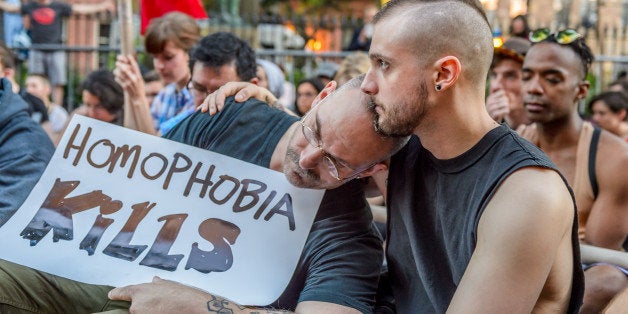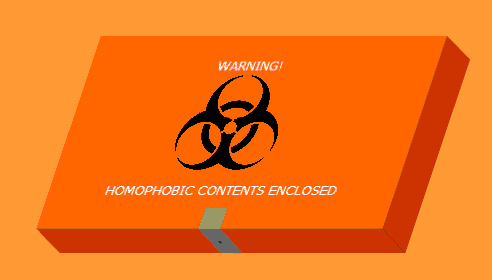
Co-authored by Joan Cook, Associate Professor at Yale and 2016 President of APA Division of Trauma Psychology.
Last week researchers from UConn painted a grim picture for two of the four major non-communicable diseases (NCDs): the combination of type 2 diabetes and cardiac disease can be deadly. NCDs are chronic health conditions that are not passed from person to person, and include cancer. Left without intervention, they can lead to death. Some NCDs occur as a consequence of exposure to negative health care risk factors such as smoking and poor dietary choices. But they can fairly easily be reduced by access to education.
As the world bears witness to the worst mass shooting in America's history, we can't help but wonder, is homophobia a non-communicable social disease? And is there something that can be done to prevent its massive global toll?
Like some NCDs, homophobia can become a chronic disease, because of exposure to risk factors like bias and intolerance in our homes and in our beloved institutions, including some religions.
It has a host of negative consequences from increased mental health distress in the LGBTQ community, to fear and loathing in the hearts of their haters. For example, LGBTQ individuals are more susceptible to contemplating and committing suicides and have higher rates of depression and alcohol misuse than heterosexuals. Because of the chronic and multiple stresses experienced by LGBTQ individuals, their physical health can be compromised, their life expectancy reduced, and they may have more social and occupational difficulties than heterosexuals.
Almost 40% of the world's population lives under overt social norms and laws that deem any relationship that is not heterosexual as criminal. In fact there are 10 countries where homosexuality can be punishable by death and there are 77 other countries where homosexuality is a punishable offense. Even in the U.S., where in 2003 the Supreme Court ruled that sexual activity between consenting adults was legal, we still lack a law that makes discrimination against LGBTQ individuals illegal. As a result, some openly LGBTQ individuals are persecuted, as was the scoutmaster James Dale who was expelled by the Boy Scouts of America when he came out.
But even if they receive some positive regard and fair laws, a much larger number of LGBTQ individuals still live restricted and sub-optimal lives. And to boot, in countries such as the U.S. where some states have some laws to protect LGBTQ individuals, homophobia still exists. Because of their sexual orientation, they experience discrimination in renting housing properties, being hired or maintaining their employment, receiving quality health services, and obtaining insurance. Furthermore, in inclusive states such as California, there are pockets of discrimination, as demonstrated in an analysis of anti-gay tweets earlier this year -- five of the 10 cities with the most anti-gay tweets were in California, two from Texas, and one each from New York, Nebraska and Louisiana.

Homophobia is not unlike the other known NCDs in that, in the near term, this chronic social condition might not kill you but its financial toll is significant. Although the exact global cost of homophobia may be incalculable, several countries have tried to estimate its impact. Some have bet that the overall economic impact of homophobia for a country can be between 0.1-1.7 percent of that country, and has been estimated to be as high as $30B annually for India. For Canada, the economic cost of homophobia has been estimated to be almost $8B, which is roughly 0.4% of the GDP; making a similar approximation for the US, the cost could be as much as $60B if not more.
Like heart disease, homophobia can be reduced and possibly globally expunged with education, and also some legislation. In fact, research has found the positive influence of peers and education can play a significant role in reducing homophobia. In a separate study, student responses to same-sex situations were evaluated before and after being exposed to four teaching units on homosexuality. The authors found a dramatic change from a negative attitude to a more positive one. Further, even the limited legislation in the US, while not mitigating homophobia, has at least made some qualitative improvements in reducing homophobia. And, when straight folks espouse positive outlooks towards those who are LGBTQ, becoming their ally rather than their enemy, it enhances everyone's sense of well-being.
If homophobia is given the same level of increasing attention that the recognized NCDs are beginning to receive, and if similar universal commitments and approaches to combating homophobia were implemented, homophobia would likely begin to diminish. The WHO's Global NCD Action Plan aims to reduce premature deaths from NCDs by 25% by the year 2025 by using emphatic advocacy, legislation and surveillance - these are the exact strategies that would make a significant difference in severely diminishing, if not eradicating homophobia, a non-communicable social disease.

